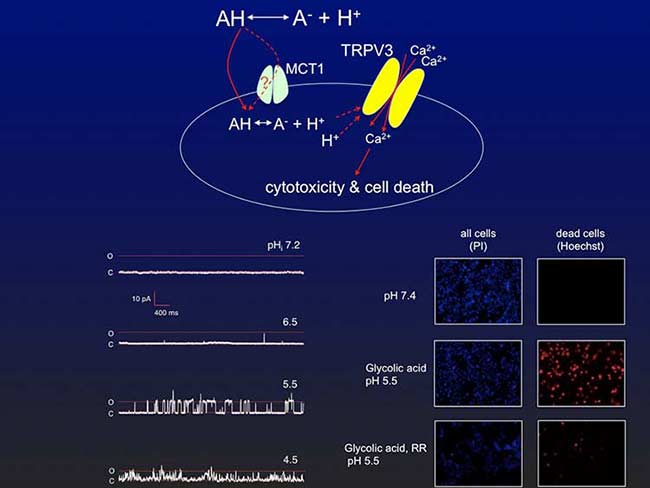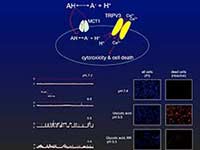Our Research
| Click on the images below to know more about our research. | TRPV3 as target for pretty skin? Like TRPV1, the warm-temperature sensor TRPV3 is also polymodal (e.g., can be activated by multiple stimuli). In collaboration with Dr. Kewei Wang’s laboratory at Peking University, we discover that TRPV3 is activated by intracellular acidification (see Figure 4) (Cao et al. JBC, 2012). TRPV3 is abundantly expressed in keratinocytes (skin cells). While the physiological significance of the channel’s sensitivity to intracellular H+ remains to be determined, the finding suggests that maybe TRPV3 is one of the targets of the alpha-hydroxyl acids (AHAs) widely used in beauty creams and chemical peels (see http://www.ucdmc.ucdavis.edu/publish/news/research/6853).

Figure 4 legend: TRPV3 is activated by intracellular acidification. (top) A schematic diagraph of the activation pathway. (bottom left) Single-channel recordings of TRPV3 currents activated by lowing the pH level on the cytoplasmic side. (bottom right) Increased cell death upon AHA activation of TRPV3, which is partially prevented by blocking TRPV3 current with ruthenium red (RR). |
|
 |
||
 |
||
 |
||
 |
||